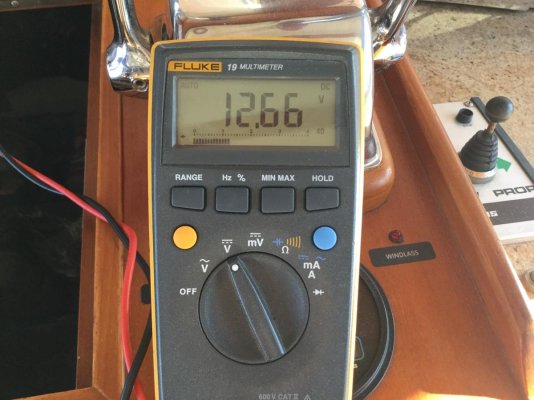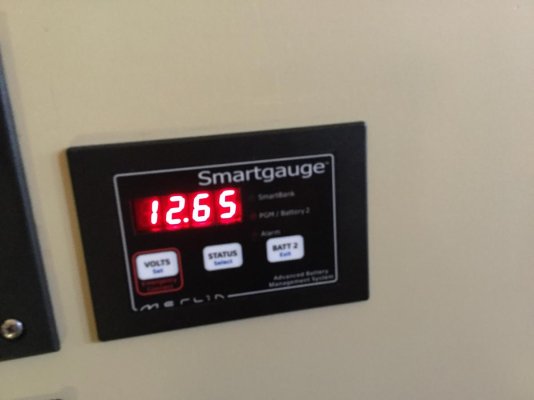MikeM
Senior Member
Here is the issue I’m dealing with.
Background: I have two panels in the pilothouse. One is the main panel, and it has a 65 amp breaker that supplies the 12V electronics panel under the helm. The voltmeter on the helm always reads a little lower than the actual alternator/battery voltage. And since we have owned the boat, the voltmeter always jumps around when we use any of the electronics. For example, the voltmeter will dip below 12V whenever the autopilot moves the rudder. I thought this was normal because it was described in the operating manual by the original owner.
New issue: Twice now the electronic panel has gone dark. Everything turns off, but the engine remains running. The first time this happened, it came back on its own after about 15 seconds. The second time we had just anchored. When I came back to the helm to shut down, it was dark. But I couldn’t stop the engine because the start/stop switches were dead. I had to open and close the main pilothouse panel breaker to get the electronics panel to come back on.
What I have done so far: I checked the main breaker. Nothing loose. And it gets its power from a buss that has other things coming off it that are not effected.
I checked the two grounds that come off of the electronics panel. They looked OK...not corroded or loose. One did use two washers because the ring terminal was a little bigger than the post.
Cleaning the grounds and reattaching them did not help. Still have the problem.
Looking for help from the forum or an electrician.
Thanks, Mike
Background: I have two panels in the pilothouse. One is the main panel, and it has a 65 amp breaker that supplies the 12V electronics panel under the helm. The voltmeter on the helm always reads a little lower than the actual alternator/battery voltage. And since we have owned the boat, the voltmeter always jumps around when we use any of the electronics. For example, the voltmeter will dip below 12V whenever the autopilot moves the rudder. I thought this was normal because it was described in the operating manual by the original owner.
New issue: Twice now the electronic panel has gone dark. Everything turns off, but the engine remains running. The first time this happened, it came back on its own after about 15 seconds. The second time we had just anchored. When I came back to the helm to shut down, it was dark. But I couldn’t stop the engine because the start/stop switches were dead. I had to open and close the main pilothouse panel breaker to get the electronics panel to come back on.
What I have done so far: I checked the main breaker. Nothing loose. And it gets its power from a buss that has other things coming off it that are not effected.
I checked the two grounds that come off of the electronics panel. They looked OK...not corroded or loose. One did use two washers because the ring terminal was a little bigger than the post.
Cleaning the grounds and reattaching them did not help. Still have the problem.
Looking for help from the forum or an electrician.
Thanks, Mike


